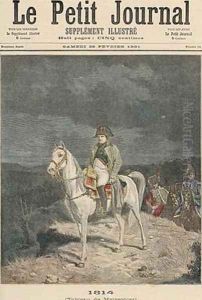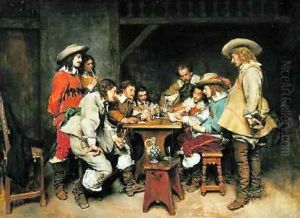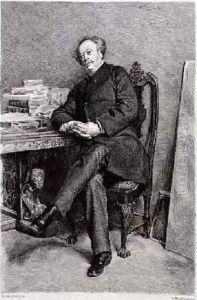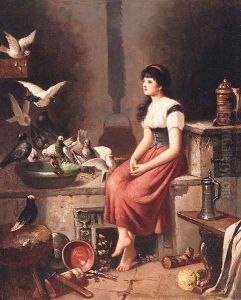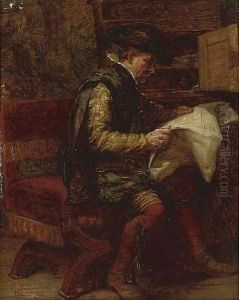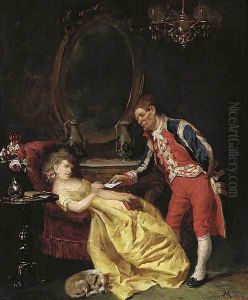Meissonier, Jean-Louis Ernest Paintings
Jean-Louis Ernest Meissonier was a French Classicist painter and sculptor famous for his depictions of Napoleon, his armies and military themes. He was born on February 21, 1815, in Lyon, France, and showed an early interest in art. Moving to Paris, he studied under Léon Cogniet, and began to exhibit at the Paris Salon in 1834. His meticulous and detailed style resonated with the Salon's audiences and won him considerable acclaim.
Meissonier's works were often small in scale but immense in detail and precision, often focusing on the splendor and pomp of military life. He gained particular popularity during the Second Empire under Napoleon III, a period when there was a strong interest in the First Empire. Meissonier's work 'The Campaign of France' (also known as '1814'), which took him years to complete, is a testament to his dedication to accuracy and detail. It depicts Napoleon and his staff during the disastrous retreat from Russia, and it solidified Meissonier's reputation as a master of historical narrative and military precision.
Beyond his historical and military subjects, Meissonier also painted genre scenes, landscapes, and portraits. He was a member of the Académie des Beaux-Arts and was awarded the Grand Cross of the Legion of Honor. Despite changing tastes in art, which began to favor Impressionism, Meissonier remained committed to his detailed and polished style throughout his career. He was also a successful public figure and was elected as a deputy of the National Assembly.
Meissonier's legacy is that of a quintessential French artist of the 19th century who captured the romantic and heroic aspects of France's past. His influence extended to other artists, particularly within the realm of military painting. He died on January 31, 1891, in Paris, and is remembered as one of the most successful and famous artists of his time.
